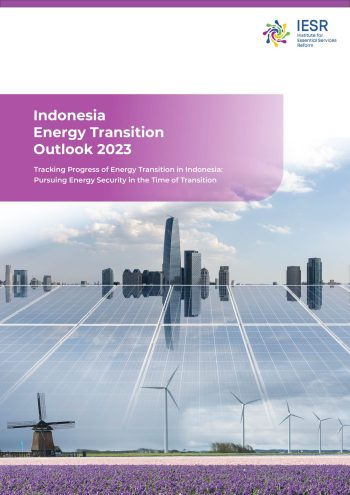Through the publication of the Indonesia Clean Energy Outlook (ICEO), IESR has tracked the progress of clean energy deployment in Indonesia since 2017. Beginning in 2020, ICEO transformed into Indonesia Energy Transition Outlook (IETO), which covers broader issues and deepens the analysis of the dynamics of the entire energy sector, such as evaluating the quality of the enabling environment of the energy transition and the readiness of transition in the power sector. IETO manifests IESR’s vision to decarbonize our energy system.
IETO 2023 arrives just as Indonesia embarks on its journey to transform its energy system. After President Jokowi pledged that Indonesia would reach net-zero emissions by 2060 or sooner, the energy policy began to shift away from fossil fuels and toward clean energy last year. The obvious shift occurs in the power sector, where PLN’s 10-year RUPTL (2021-2030) for the first time includes more renewable power plants than fossil fuels. The decline in electricity demand, which was exacerbated by the COVID pandemic, compelled PLN to drastically reduce its coal-fired power plants.
The NZE objective also accelerates the power sector’s emission peaks relative to the initial plan. A USD 20 billion Just Energy Transition Partnership (JETP), launched during the Indonesia G20 summit, stipulated that emissions from the power sector will peak by 2030 and be capped at 290 MtCO2e. Even though the JETP target is not aligned with the 1.5°C Paris Agreement, it is still a good measure that could allow the rapid deployment of renewable energy, the improvement of energy efficiency measures, and the initiation of the coal phase-down before 2030. There is still a great deal of work to be done to make the energy transition truly happen and be sustainable.
Indonesia Energy Transition Outlook (IETO), energy transition, clean energy, decarbonization, net-zero emissions, renewable energy mix, PLN RUPTL, JETP, Indonesia G20 Summit, coal, renewable energy, energy efficient

